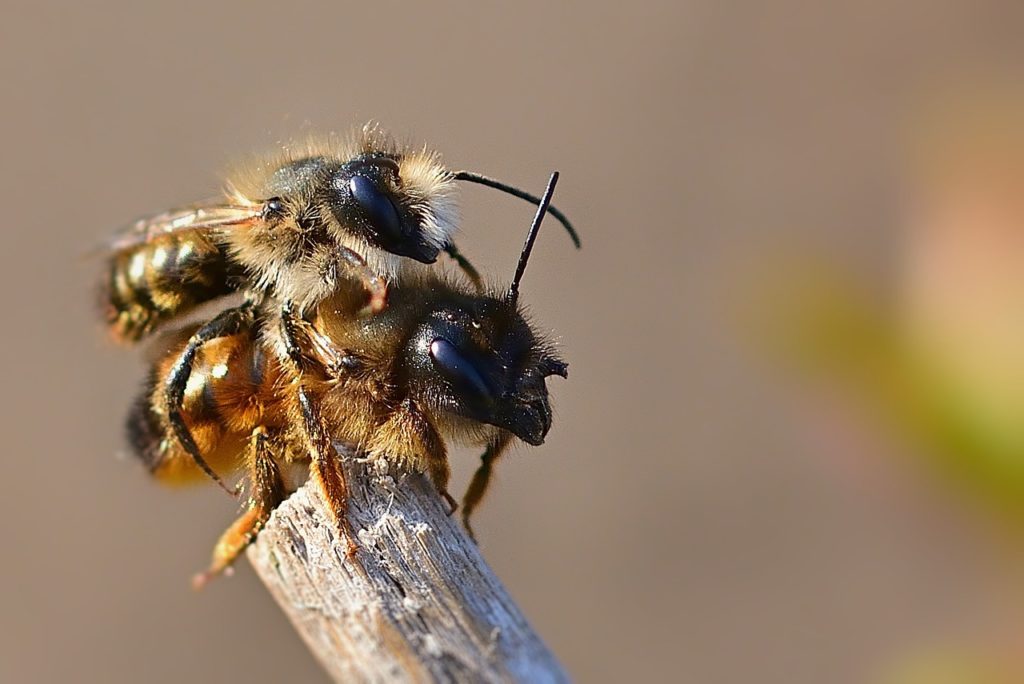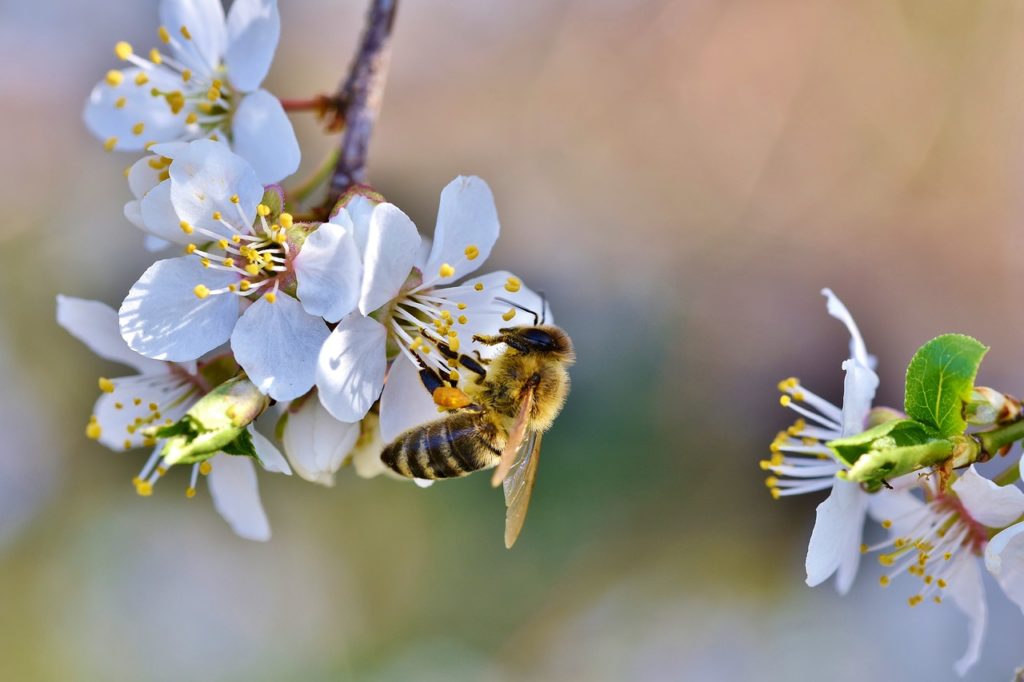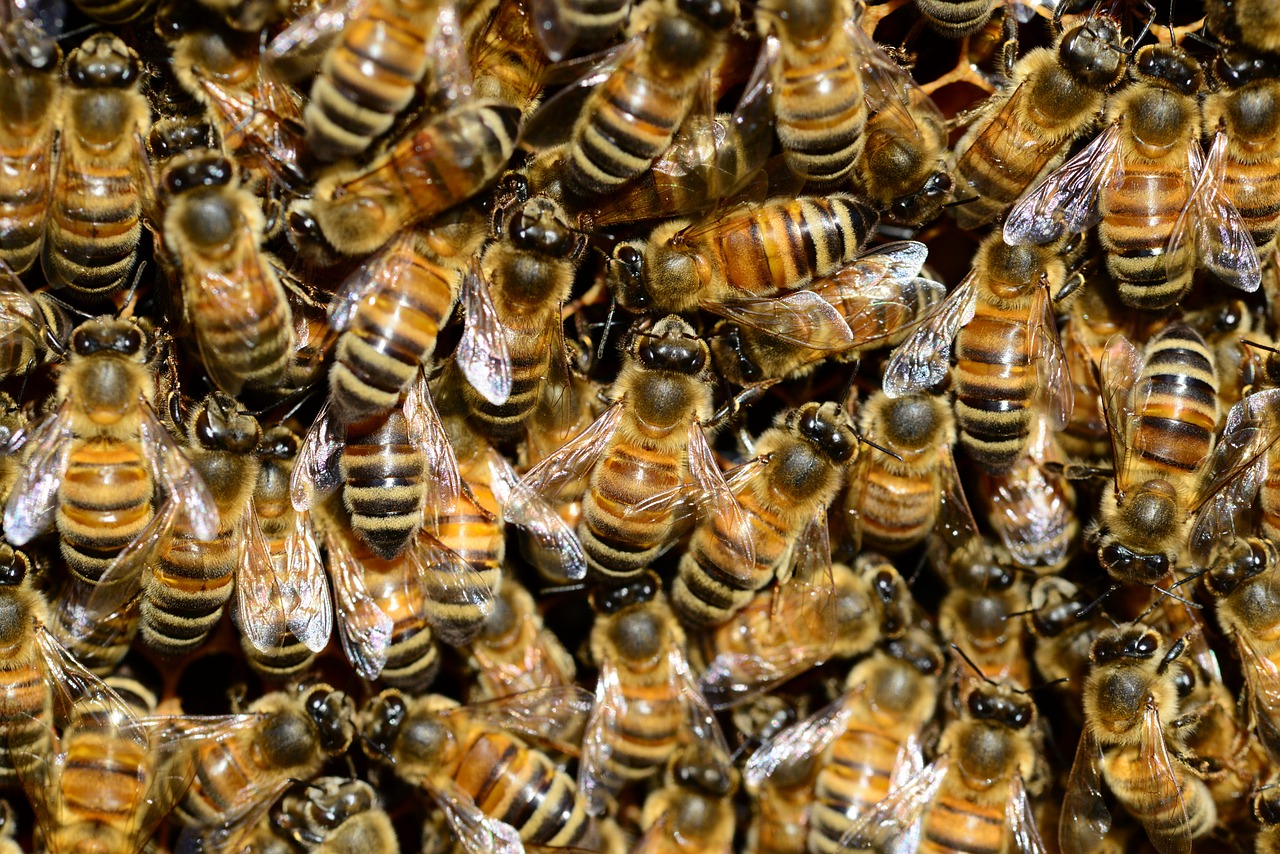Much of the global human food ecosystem is dependent on bees and other pollinators.
Without bees, we would not be able to grow more than a third of our favorite major food crops, including almonds, cherries, blueberries, broccoli, squash, and tomatoes. These, and a host of other food plants, are dependent in whole or in large part on pollination by bees. In fact, the experts at the American Beekeeping Federation point out that honeybees add approximately $20 billion annually to the total value of crop production in the United States.
If these highly nutritious crops fail, humans would have to fall back on less-nutritious staple crops such as potatoes, corn, and rice, a situation that would exacerbate existing dietary imbalances.
A number of scientists believe that bees and other pollinators are losing numbers in some regions of the world by as much as 30 percent annually. Climate change is a major factor in this alarming trend, and so are habitat destruction, pesticides, pollution, and invasion by non-native species. Many researchers believe climate change is the most serious and pervasive threat of all.
Climate disruption harms the viability of bee colonies

Extremes temperatures and alterations in precipitation patterns, driven by climate change, are among the key factors threatening many bee species.
A research report, published in the professional journal Science in February 2020, looked at populations of more than 60 species of bumblebees throughout North America and Europe. The researchers examined how changing temperatures and precipitation levels have affected bees in terms of the diversity of their populations, ability to colonize new territory, and danger of local extinction.
The researchers note an ongoing risk of extinction whenever historical climate norms have changed enough to overcome the tolerance levels that various species have gained over time. In addition to noting bee population declines traceable to climate change, the scientists extrapolated these results to hypothesize that such changes may exacerbate the loss of biodiversity among other species in the same regions.
A world without bees?
Another research project employed a Big Data set to show exactly how much bee populations are dropping. One finding: The average person in North America in any location today is 50 percent less likely to encounter a bumblebee than a similar person in 1974.
Some previously common bee species have completely disappeared from places where they were once abundant. Canadians, for example, now don’t see the once-familiar rusty patched bumblebee, a species that used to be found throughout Ontario. In the United States, this species is on the endangered list.
Environmental dysregulation leads to dysfunction
Other studies suggest that climate change is poised to drastically change the existing symbiotic relationship between plants and the bees and other pollinators they rely on for their propagation.
For example, a flowering plant may respond to rising temperatures in its native habitat by migrating over time to a higher or cooler region. However, the pollinators that historically help in that plant’s reproduction will not necessarily follow. This can affect pollinator populations over time.
A heating planet harms bees, too

For close to a decade and a half, colony collapse disorder (CCD) has garnered widespread media coverage. Stories of the often-mysterious phenomenon have panicked farmers and the general public.
CCD takes place when most of a colony’s worker bees disappear; any bees that remain begin to starve. This leaves the queen alone in a non-functional hive, without means of sustaining herself or breeding new generations of bees.
While new cases of CCD have declined over the past five years, according to the federal Environmental Protection Agency, other types of threats that can cause colony collapse are growing as temperatures rise.
With higher average temperatures, honeybees across the northern hemisphere are losing much of their suitable ranging territory. Higher heat levels in more southerly habitats, such as Spain and Mexico, have moved the climate needle to the extreme end of the temperature spectrum that bees can tolerate.
In some places, the air becomes so over-heated that bees die and fall immediately to the ground. These hotter temperatures are, in turn, pushing bees northward, further shrinking the viable lands available to them.
The lead author of the February 2020 study in Science points out that, due in large part to heat disruptions, bumblebees are vanishing from certain regions eight times as quickly as they colonizing others.
This temperature dysregulation also threatens bees’ ability to pick up on subtle weather clues, like air temperature and the melting of snow, that they use to sense when spring has arrived. When temperature and weather configurations spin out of bees’ literal comfort zone, they may become confused and fail to pollinate plants until long after the optimum time for pollination has passed.
Climate change spurs parasite attacks
In addition, climate change has increased infectious diseases that affect bees. With warming global weather patterns, gut parasites and mites have flourished. These pests are particularly dangerous to bees. Many scientists point out that climate change-driven heat waves will likely make this situation even worse over time, leading to more colony collapses and the death of formerly well-functioning hives.
Humans can help bees and the planet
All of this is frightening, but there are some things you can do to help:
- Buy produce from local markets that support local beekeepers. Another way to support beekeepers is to sponsor a hive through community projects.
- Carefully weigh the benefit-risk ratio when determining whether to use pesticides in your garden, particularly in locations where pollinators are active. Choose more natural means of pest control whenever possible.
- Grow additional trees, flowers, and other plants that offer sources of pollen and nectar. Lavender, tomatoes, mint, and basil are a few of the plants that serve as food sources for both bees and humans.
- Refrain from destroying or moving the nests of any hibernating insects.
- Try setting out clean sources of fresh water for passing bees to drink on hot days. A fountain, a pool, or even just a bowl of water can be a significant way to help bees on their daily journeys.

